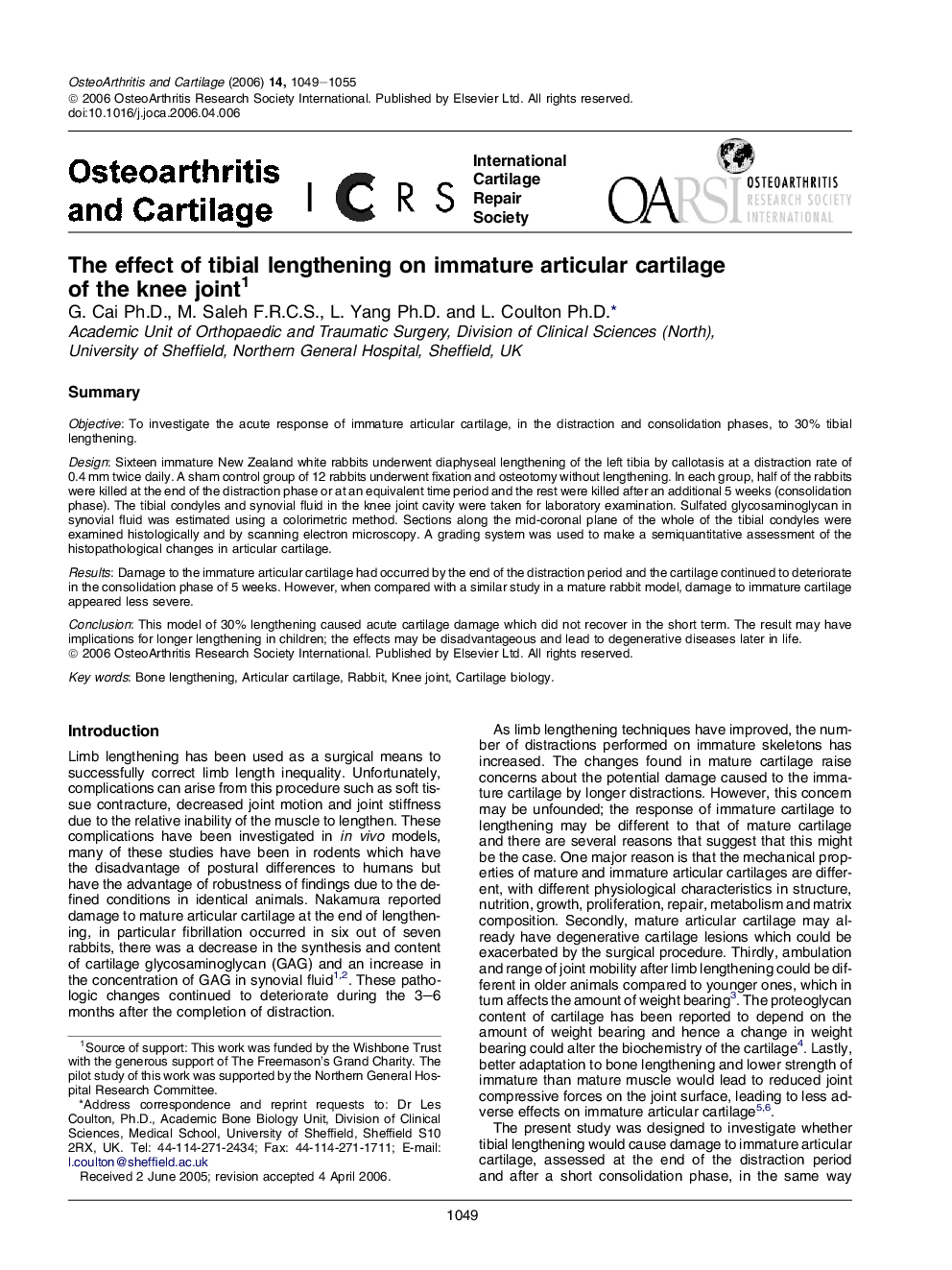| Article ID | Journal | Published Year | Pages | File Type |
|---|---|---|---|---|
| 3381210 | Osteoarthritis and Cartilage | 2006 | 7 Pages |
SummaryObjectiveTo investigate the acute response of immature articular cartilage, in the distraction and consolidation phases, to 30% tibial lengthening.DesignSixteen immature New Zealand white rabbits underwent diaphyseal lengthening of the left tibia by callotasis at a distraction rate of 0.4 mm twice daily. A sham control group of 12 rabbits underwent fixation and osteotomy without lengthening. In each group, half of the rabbits were killed at the end of the distraction phase or at an equivalent time period and the rest were killed after an additional 5 weeks (consolidation phase). The tibial condyles and synovial fluid in the knee joint cavity were taken for laboratory examination. Sulfated glycosaminoglycan in synovial fluid was estimated using a colorimetric method. Sections along the mid-coronal plane of the whole of the tibial condyles were examined histologically and by scanning electron microscopy. A grading system was used to make a semiquantitative assessment of the histopathological changes in articular cartilage.ResultsDamage to the immature articular cartilage had occurred by the end of the distraction period and the cartilage continued to deteriorate in the consolidation phase of 5 weeks. However, when compared with a similar study in a mature rabbit model, damage to immature cartilage appeared less severe.ConclusionThis model of 30% lengthening caused acute cartilage damage which did not recover in the short term. The result may have implications for longer lengthening in children; the effects may be disadvantageous and lead to degenerative diseases later in life.
